Often what separates one brand from the next is the ability to take advantage of all resources or think outside the box and overcome limitations. Some firms use inventive ways to form bonds and relationships.
“Lori and I started in 1977 with one cow, very little capital and built the operation from there. We had to think out of the box to overcome the lack of land and other resources,” says Galen Fink of Fink Beef Genetics.
Today, the operation is headquartered in Randolph, Kansas, on ground purchased in 2006. The 20th annual bull sale featured 250 Angus and Charolais bulls. To date, Fink Beef Genetics has garnered numerous awards and has been ranked in the top 25 largest seedstock producers by the NCBA since 2004.
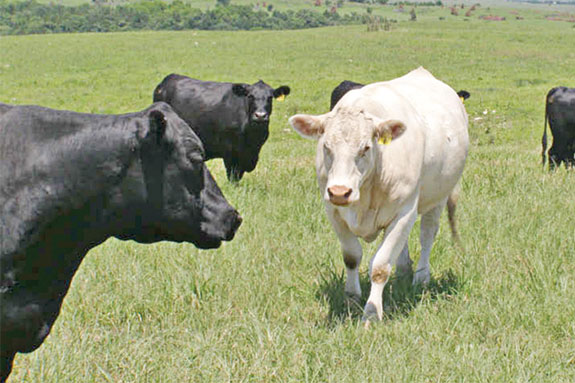
Genetic foundations
The Fink program was built through the use of embryo transfer and artificial insemination. Incorporating technology allowed the program to grow in a somewhat non-traditional manner.
“We didn’t have the land to build. We started putting embryos in other people’s cows,” Fink says. “I tried to identify good commercial cattlemen who had extremely good management. We were trying something new and it has worked well for our program.”
The first step was to create a product that was in demand. Utilizing advanced reproductive technology allowed the program to use top genetics.
“I knew to create the product we needed, I had to use proven genetics and not chase extremes. I still use proven genetics today, because most of the guesswork has been eliminated,” Fink says. “Most of our customers needed closely related genetics to make progress and we could create sire groups of multiple-trait cattle.”
Finding proven herd sires is sometimes a challenge. Most firms sample young sires, but selection at Fink Beef Genetics depends on more than just an Expected Progeny Difference (EPD).
“It’s hard to find proven genetics that come with the traits I am looking for,” Fink says. “Once a bull gets three or four calf crops on the ground, he has the potential to be used in our herd. I am trying to eliminate as many variables as I can through mating decisions. I like to see daughters in production. There aren’t very many perfect bulls out there, but that’s what I am looking for.”
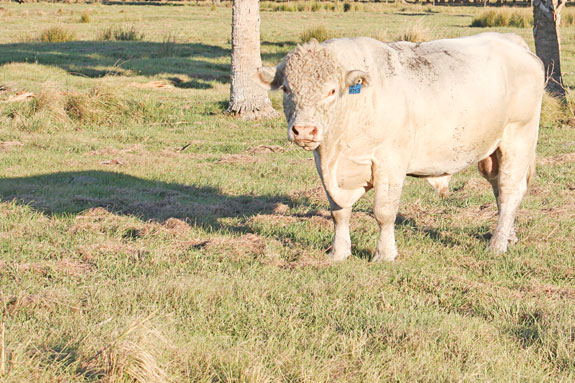
Crossbreeding alternatives
Genetic alternatives are at the forefront of most commercial bull buyers’ thought processes when they look to purchase the next generation of herd sires. The Fink philosophy of creating different sire groups of closely related bulls works well, but was not enough for the forward-thinking management team. A viable crossbreeding alternative was the next step for this growing enterprise.
“In our quest to become a total seedstock provider and increase customer base, Charolais genetics were added to our program in 1999,” Fink says. “We thought our customers would be looking for a crossbreeding component and what better complement to our Angus genetics than Charolais?
Efficiency has dictated that we have to crossbreed in the industry. Commercial operators must have a planned crossbreeding system with a specific end product in mind.”
“We have utilized Angus and Charolais sires from Fink Beef Genetics. Crossed with our Brahman-influenced cow herd, the calves work through the entire system and more importantly, based on carcass data, fit the consumer,” says Gene Lollis, the manager of Buck Island Ranch of Lake Placid, Florida.
Each operation uses a slightly different method to meet customer demand. Finding ways to make the best use of the resources available has led to a slightly different approach.
“We are using sexed semen to produce more bull calves. Times have changed – the value for me is in that bull calf,” Fink says. “With our limited land base, producing 80 percent bulls and 20 percent females would be fantastic.”
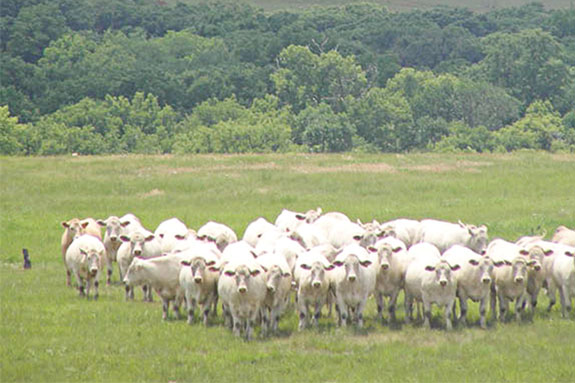
Stronger sires
Many management practices can be acclimated to different operations. Finding something that works is the goal. Bull development is a key component of the Fink philosophy.
“I want to develop bulls that are ready to work in any climate and promote longevity. Fat can change a lot of things, but over-developed bulls have problems like fat in the scrotal area and it promotes soundness issues. I am using high-accuracy sires. If I overfeed them, I will hurt longevity,”
Fink says. “The way we develop bulls, they are getting enough ration to express their genetics. There will be differences from top to bottom.”
“We have been working with Fink Beef Genetics for about 10 years now and the bulls have been working great,” Lollis says. “They hit the ground running and acclimate to our area quite nicely once they get used to eating our forages. I turned out bulls the other day and I still have a couple of the first bulls I bought from Galen.”
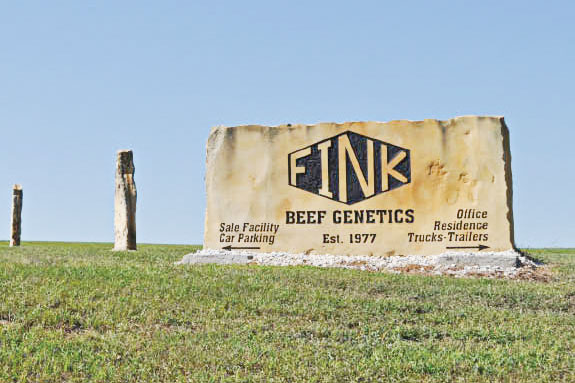
Bull suppliers are entering a new realm of production. Economics play more of a role in bull selection today than ever before. Depending on the program, longevity is a trait more and more commercial cattlemen are looking for in the bull battery.
“We are pretty hard on the bulls before they leave our operation. Economically, we have to do all we can to help stretch our customers’ bull budget,” Fink says. “I think it would be embarrassing to have to replace bulls every year or two because of genetics. I am happy if the bull buyer calls me up in five years looking for new bulls.”
“He doesn’t get the bulls too fat. They get here in the fall and acclimate to the change in climate once they get their belly full,” says Bill Cowan of Havre, Montana.
A name to trust
Fink Beef Genetics offers a three-year guarantee on fertility and soundness. “We have as good a guarantee as anyone out there. For as many bulls as we sell, we replace very few. I have to stand behind my product and our business has grown because of it,” he stated.
“The bulls stay sound. Galen keeps track of his sales,” Cowan says. “He stands behind his guarantee.”
Many outfits can duplicate the same product through a little time and determination. Building repeat business and creating new markets through customer service is a chance for seedstock suppliers to capitalize on extra effort.
“My customers’ number one goal is profit. If they don’t make a profit and survive, they don’t need me,” Fink says. “Within 100 miles, there are 17 bull sales. Customer service is a way to differentiate our program. We had to reach outside our area to create markets and do the extras better than other seedstock suppliers.”
“The Fink customer service is really good. They have helped me select the bulls I am using and follow up to make sure they are doing a good job. The bulls have been ‘as advertised,’ ” says J.D. Roberts of Perkins Prothro Ranch in Kerrick, Texas.
“I like going to bull sales, but it seems like I always have something else to do. I have left genetic selection up to Galen based on what we wanted. The first goal I gave him was for cow size,” Cowan says. “We have been using Fink bulls for 18 years and he comes to the ranch every two years to look at our cows. I think we have really improved the cow herd and maintained carcass traits.”
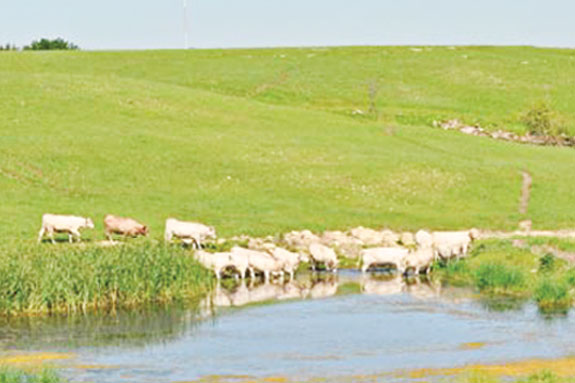
An extra mile for customers
Helping customers get the most out of the product is another trait of a good seedstock outfit. Utilizing bull power in the proper manner during the first breeding season will help lead to a long productive life.
“I market a yearling bull. I really can’t afford to market a long yearling or two-year-old bull,” Fink says. “Yearling bulls are pretty athletic and can get a lot of cows bred. Use those bulls that first year, bring them back in and take care of them.”
“Getting those bulls in the fall for spring turnout has really helped because they had time to adapt. We studied the Fink program and liked their genetics. It has been a good relationship,” says Kevin Tomera of Jiggs, Nevada.
“In the spring we’ll turn those bulls out for 45 days and they stay sound,” Cowan says. “We’re in the mountains; they have to work hard to get cows bred.”
Part of a good customer service plan is to help customers market the calf crop. Fink Beef Genetics has worked to develop relationships that promote the genetics.
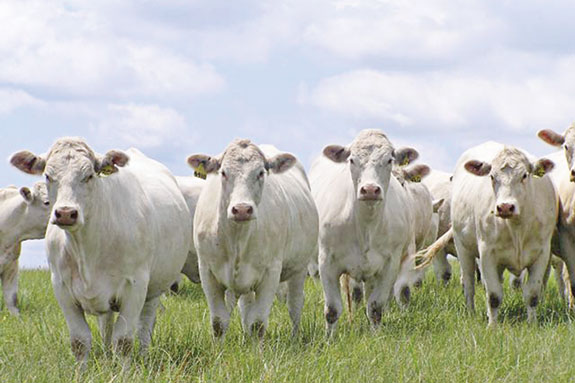
“Helping us market our calf crop does make a difference,” Tomera says. “Finks have worked hard to get us connected with potential buyers.”
“We market through Superior and Galen contacts several potential buyers to tell them what day we’re selling,” Roberts says. “It is a good relationship. Galen stops by to make sure we’re happy with the bulls and that he’s happy with the product he sold us.”
Every seedstock operation has its own recipe for success. Relationships seem to be the bottom line for Fink Beef Genetics. Working with customers and cooperators to make sure the product fits the bill. The diligence taken on a daily basis is reflected with any conversation. Striving to be the best may be a cliché for some, but it’s a way of life in Randolph, Kansas.
“Making a sound product with good genetics and customer service is about all we have to offer. It’s a changed world and we have tried to change with it,” Fink says. “If we’re going to be in this business we want to be at the top.”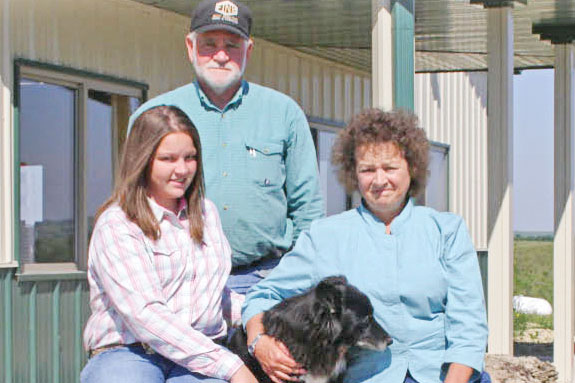
PHOTOS
Top: One of Fink Beef Genetics Charolais bulls is shown at Buck Island Ranch in Lake Placid, Florida. The bull development philosophy is to have sires ready to work in any climate and provide longevity. The Buck Island Ranch customer praises Fink bulls for their ability to adapt to Florida’s unique environment and adding market acceptance to the calf crop. The Finks began using Charolais cattle as the crossbreeding component to Angus cattle in 1999.
Bottom: From left, Megan, Galen and Lori Fink operate Fink Beef Genetics in Randolph, Kansas. The seedstock operation markets Angus and Charolais bulls to commercial cattlemen. The firm uses AI and embryo transfer to create closely related genetics. This formula has helped Fink Beef Genetics get the most out of limited resources.
Photos courtesy Fink Genetics.







